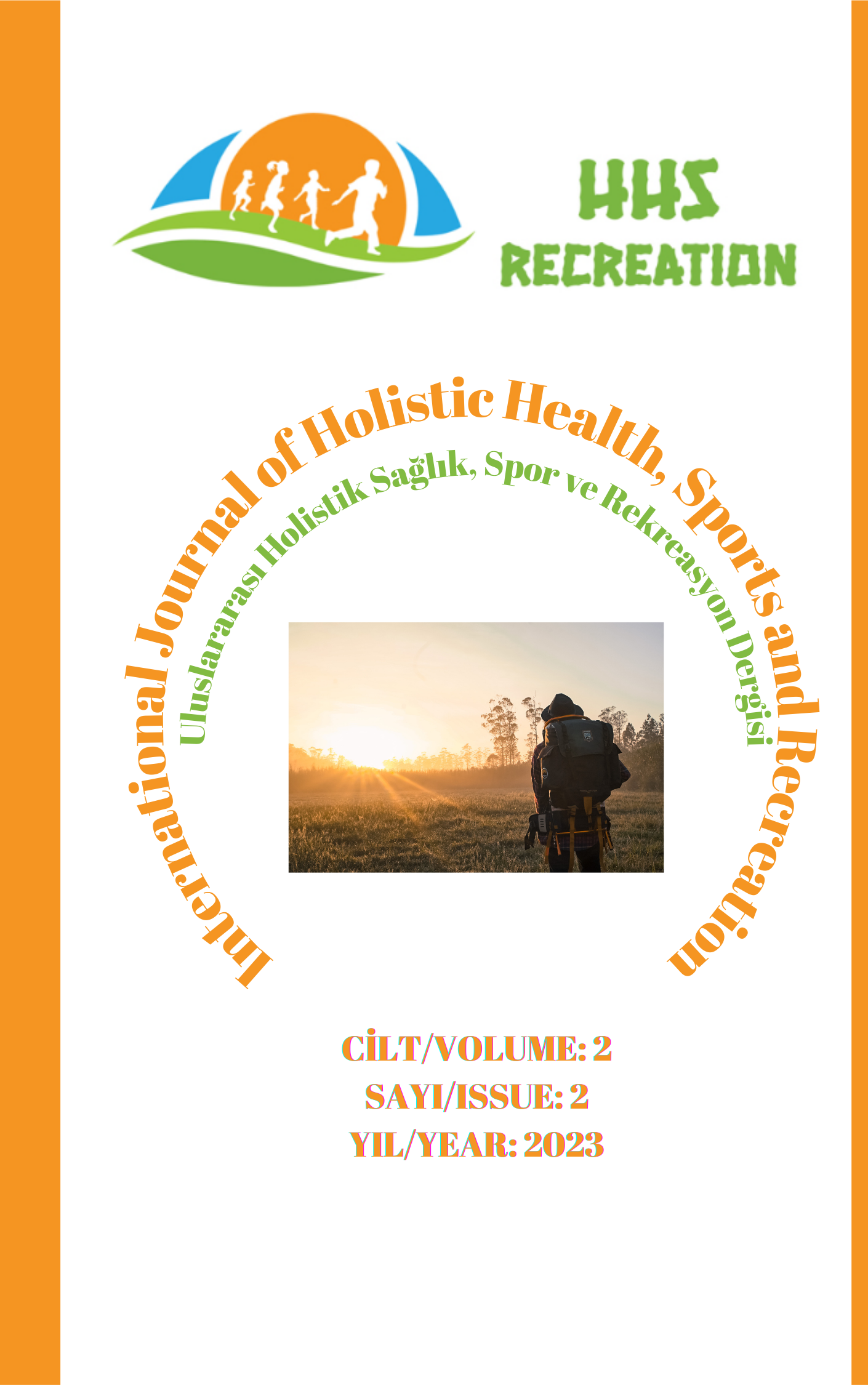Jealousy Scale in Athletes (SCQ): Validity and Reliability Study
DOI:
https://doi.org/10.5281/zenodo.10396447Keywords:
Sports, jealousy, scale developmentAbstract
The purpose of this research; To develop a measurement tool to reveal the jealousy levels of athletes. A literature review was conducted during the process of creating the candidate scale form, and 45 items remained from the 55-item form, considering the focus group and expert opinions of 11 experts in the relevant field. A 45-item, 5-Likert scale trial form was applied to 300 athletes. EFA (Exploratory Factor Analysis) was used to explain the results of the data collected from the athletes. At the end of the analysis, it was concluded that the study consists of 3 sub-dimensions and 21 items in total: 'Performance & Success Jealousy', 'Conditions & Opportunities Jealousy' and 'Social Support & Popularity Jealousy'. To ensure validity in the study, CFA (Confirmatory Factor Analysis) was performed by collecting 21 items and 271 data from athletes, and standardized values and t values revealed that all items were significant. It has been found that all of the standardized coefficients of the fit indices of the tested measurement model ensure the fit of the measurement model. In addition, the fact that the convergent reliability (CR) and explained variance (AVE) values of the study are significant shows that the items meet the necessary criteria for the factor. Finally, the Cronbach Alpha internal consistency values of the sub-dimensions were calculated as .858 in the first sub-dimension, .859 in the second sub-dimension and finally .868 in the third sub-dimension. As a result of these findings, the 'Jealousy in Athletes Scale (JSC)' was found to be scientifically and psychometrically reliable and valid. showed that it is.
References
Akan, Y. (2019). Arkadaş Kıskançlık Ölçeği’nin (AKÖ) geliştirilmesi: Geçerlik güvenirlik çalışması. Anemon Muş Alparslan Üniversitesi Sosyal Bilimler Dergisi, 7(5), 133-140. doi: 10.18506/anemon.506363.
Blevis, M. (2010). Kıskançlık (I. Aydın, Çev.). İstanbul: Sel Yayıncılık.
Buunk B., & Bringle, R. G. (1997). Jealousy in love relationships. D. Perlman and S. Duck (Ed.), Intimate relationships: Development, dynamics, and deterioration, (s. 123-147). Beverly Hills, CA: Sage
Büyüköztürk, Ş. (2018). Sosyal bilimler için veri analizi el kitabı. Pegem Atıf İndeksi, 001-214.
Çetin, S., & Topaloğlu, Y. (2020). Türk romanında bilinçdışı ve rüya.
Çokluk, Ö., Şekercioğlu, G., & Büyüköztürk, Ş. (2012). Sosyal bilimler için çok değişkenli istatistik: SPSS ve LISREL uygulamaları (Cilt 2). Ankara: Pegem Akademi.
Davis, L. L. (1992). Device review: Getting the most from a panel of experts. Applied Nursing Research, 5(4), 194-197.
Demirtaş, H. A., & Dönmez, A. (2006). Yakın ilişkilerde kıskançlık: Bireysel, ilişkisel ve durumsal değişkenler. Türk Psikiyatri Dergisi, 17(3), 181-191.
DeVellis, R. F. (2014). Ölçek geliştirme: Kuram ve uygulamalar. Nobel Akademik Yayıncılık.
Edalati, A., & Redzuan, M. R. (2010). Perception of women towards family values and their marital satisfaction. Journal of American Science, 6(4), 132-137.
Festinger, L. (1954). A theory of social comparison processes. Human Relations, 7(2), 117-140.
Gilbert, D. T., Giesler, R. B., & Morris, K. A. (1995). When comparisons arise. Journal of personality and social psychology, 69(2), 227.
Greenberg, J., & Pyszczynski, T. (1985). Proneness to romantic jealousy and responses to jealousy in others. Journal of Personality, 53(3), 468-479.
Hadfield, J. A. (1962). Childhood and adolescence. Harmondsworth: Pelican.
Kamphoff, C. S., Gill, D. L., & Huddleston, S. (2005). Jealousy in sport: Exploring jealousy's relationship to cohesion. Journal of Applied Sport Psychology, 17(4), 290-305.
Kızıldağ, S. (2017). Duygusal Kıskançlık Ölçeği Üniversite Öğrencileri Formu: Geçerlik ve güvenirlik çalışmaları. Eğitimde ve Psikolojide Ölçme ve Değerlendirme Dergisi, 8(1), 146-157. DOI: 10.21031/epod.302673.
Kurumu, T. D. (2020). Sözlük. Erişim adresi: https://sozluk.gov.tr. Erişim tarihi: 19 Aralık, 2020.
Mead, M. (1977). Celos: primitivos y civilizados. G. Clanton y LG Smith (edits.). Celos. Englewood Cliffs. NJ: Prentice Hall.
Özdemir, S. (2021). Kıskançlık olgusu ve akademik örgütlere yansıması. Süleyman Demirel Üniversitesi Vizyoner Dergisi, 12(30), 652-676.
Pfeiffer, S. M., & Wong, P. T. (1989). Multidimensional jealousy. Journal of social and personal relationships, 6(2), 181-196.
Salovey, P., & Rodin, J. (1986). The differentiation of social-comparison jealousy and romantic jealousy. Journal of Personality and Social psychology, 50(6), 1100.
Schelling-Kamphoff, C., & Huddleston, S. (1999). Jealousy in collegiate track and field athletes. In Proceedings of the Association for the Advancement of Applied Sport Psychology annual convention, Banff, Alberta, Canada.
Silver, M., & Sabini, J. (1978). The perception of envy. Social psychology, 105-117.
Tabachnick, B. G., & Fidell, L. S. (2015). Çok değişkenli istatistiklerin kullanımı. Nobel.
Van de Ven, N., Zeelenberg, M., & Pieters, R. (2011). Why envy outperforms admiration. Personality and social psychology bulletin, 37(6), 784-795.
White, G. L., & Mullen, P. E. (1989). Jealousy: Theory, research, and clinical strategies. Guilford Press.
Downloads
Published
How to Cite
Issue
Section
License
Copyright (c) 2023 International Journal of Holistic Health, Sports and Recreation

This work is licensed under a Creative Commons Attribution 4.0 International License.



